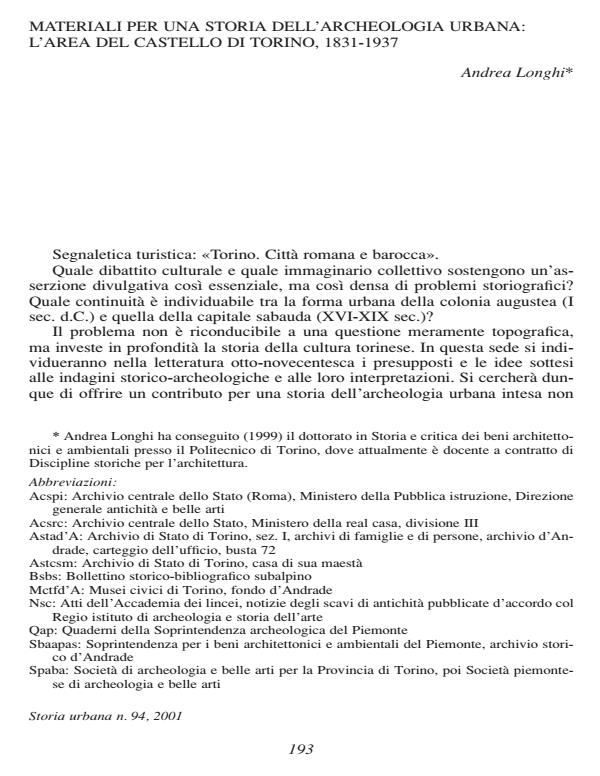Materiali per una storia dell'archeologia urbana: l'area del Castello di Torino, 1831-1937
Journal title STORIA URBANA
Author/s Andrea Longhi
Publishing Year 2002 Issue 2001/94
Language Italian Pages 24 P. File size 95 KB
DOI
DOI is like a bar code for intellectual property: to have more infomation
click here
Below, you can see the article first page
If you want to buy this article in PDF format, you can do it, following the instructions to buy download credits

FrancoAngeli is member of Publishers International Linking Association, Inc (PILA), a not-for-profit association which run the CrossRef service enabling links to and from online scholarly content.
The history of archaeological surveys and their interpretations is a basic instrument of analysis for the knowledge of the ancient city, but also for the comprehension of the contemporary transformations of the town: urban archaeology is not only expression of an idea of archaeology, but a process which involves administrations, institutions and cultural milieux (architects, planners, engeneers). The studies about the area of the Castle (Palazzo Madama, in piazza Castello) began with the earliest archaeological experiences during XIX-century (Carlo Promis) and were continued by Alfredo d’Andrade (1884-1886: analysis for the restoration of the Castle); the latest studies are the stratigraphical surveys made during the ‘80s.
Andrea Longhi, Materiali per una storia dell'archeologia urbana: l'area del Castello di Torino, 1831-1937 in "STORIA URBANA " 94/2001, pp , DOI: